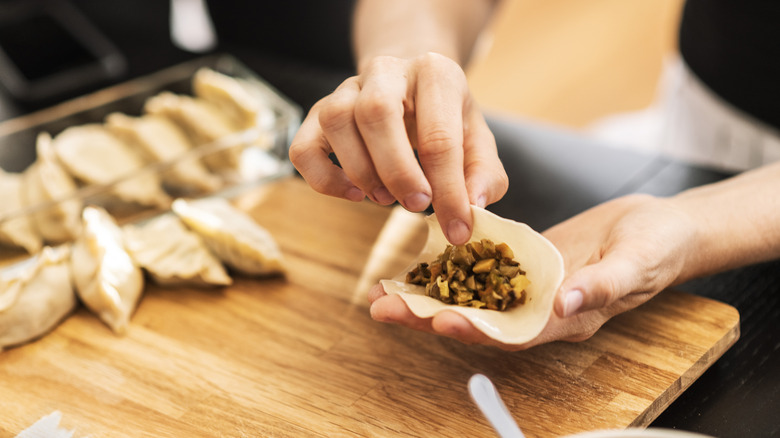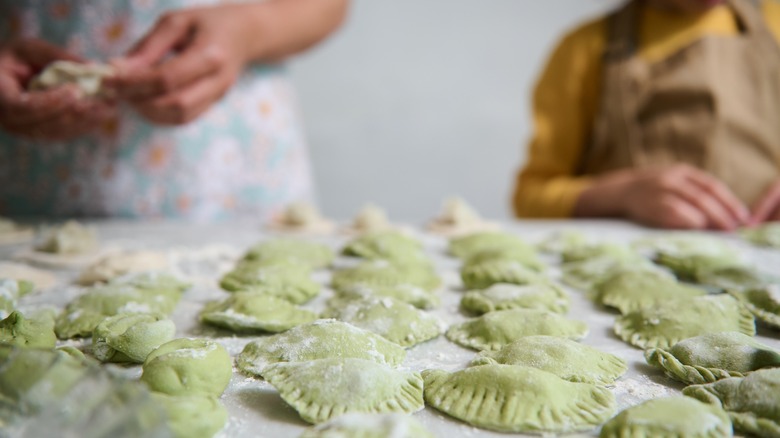The Biggest Mistake That Is Ruining Your Homemade Dumplings
Those who have ventured out into the brave culinary waters of constructing homemade dumplings know it's a tenuous venture that can go wrong at any stage. However, if you get it right, folding your own dumplings is a fun and delicious way to impress your friends and family. We spoke with, Kenny Leung, the Executive Chef at YAO NYC to get his take on how to avoid homemade dumpling disasters.
According to Chef Leung, whose menu at YAO NYC features five different iterations of dumplings, there is one big mistake home cooks tend to make when attempting their own dumplings. "Make sure when you fill your dumplings that the dumpling filling isn't too wet," he advises. "If it's too wet, the moisture will break up the dumpling!"
Speaking from experience, it's perfectly natural to want to create a dumpling stuffed with a flavorful, indulgent core, but you'll pay for it when it comes to the folding stage. So when composing your filling — whether you're using meat, veggies, or seafood — it's best to cook off any moisture. For veggies in particular, use a clean tea towel or cheesecloth to squeeze out as much liquid as possible. It's also good to dice your protein into small pieces because larger chunks take longer to cook and can contribute to wrapper tearing if you're not careful.
How to remove moisture from your filling
If the potential of a soggy filling isn't scaring you away from attempting homemade dumplings, we recommend perusing this piece on expert tips for making the perfect dumplings before getting started. When it comes to figuring out what to stuff your dumplings with, the options are endless. Traditionally, Cantonese dumplings like the ones Chef Kenny Leung makes, feature a protein or veggie along with garlic, egg, chives, soy sauce, sesame oil, and ginger. As you can see, that's a lot of flavor packed into a little wrapper.
If you've finished cooking and flavoring your filling and it still seems too wet — do not worry, there are a number of things you can try to dry out the stuffing. Our favorite trick is adding a little bit of an absorbing agent like cornstarch or breadcrumbs which will latch onto the leftover moisture and help bind your filling. Once you're certain that your filling isn't going to contribute to an overly soggy wrapper, you're ready for folding! Just remember not to overfill your wrapper and you're on your way to perfectly shaped dumplings. And if you make too many dumplings, never fear, they can easily be frozen and reheated at a later date.

